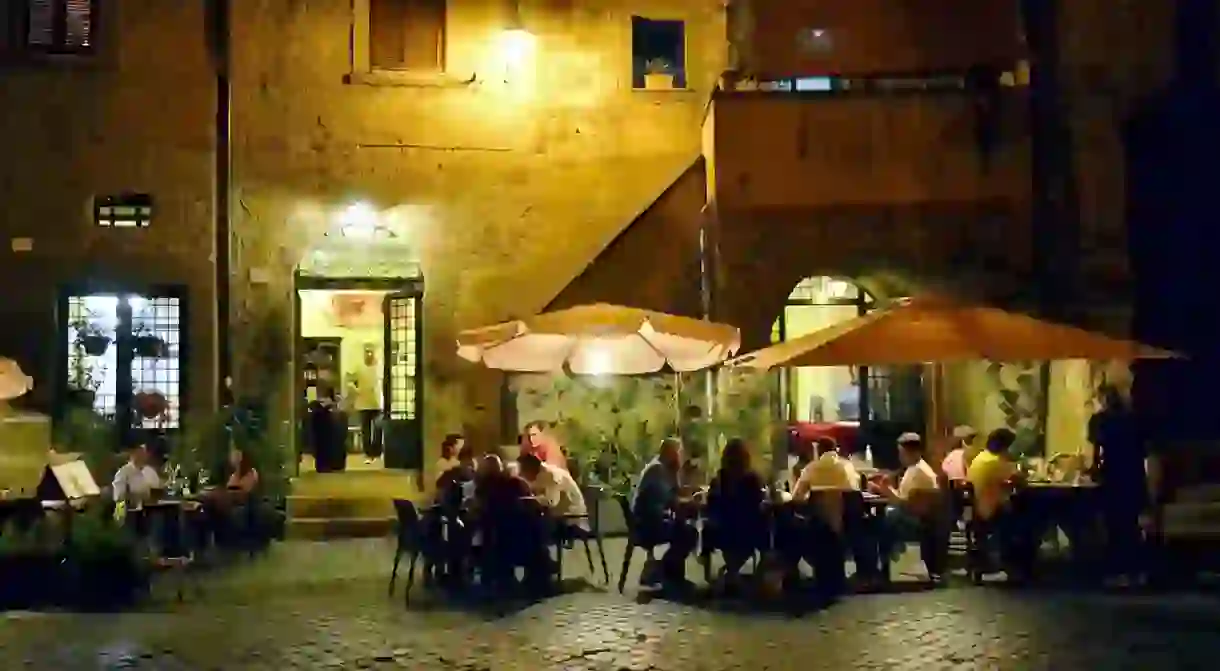The Best Things To See, Do & Eat in Viterbo, Italy

Viterbo is a medieval gem just one hour north of Rome near Lago di Bolsena. It is best known for being the seat of the papacy for two decades during the 13th century and for hosting the longest papal election (or conclave) in the history of the Catholic Church during this time, lasting nearly three years. The city is also known for its thermal springs that have been celebrated for centuries. Throw some fabulous traditional restaurants into the mix and you’ve got the perfect weekend getaway from Rome.
See
Palazzo dei Papi
In Viterbo’s main piazza you’ll notice a beautiful ornamental loggia, an architectural element supported by a series of columns or arches that made an appearance in all Italian municipalities during the Middle Ages. Featured in public squares and civic buildings, they were a symbol of justice and government. The loggia in Viterbo belongs to the Papal Palace, the city’s most noteworthy site for its historical importance. Viterbo functioned as the papal seat from 1257 to 1281, nearly a quarter century, during which the Catholic Church experienced its longest conclave ever. The death of Pope Clement IV in 1268 sparked political infighting amongst cardinals who did not elect the subsequent pope, Gregory X, until 1271; during the last year of the deliberations the cardinals are said to have been closed within the Papal Palace con chiave (with key) lending the name to the conclave process.

Duomo di Viterbo
A focal point of all Italian towns and cities is its duomo, or cathedral, so don’t miss the imposing Romanesque Duomo di Viterbo in Piazza di San Lorenzo. Said to have been built on the site of an ancient Etruscan temple dedicated to Hercules, the church was considered an extension of the Papal Palace during the Middle Ages and both overlook the town below. It is sparsely decorated inside and out but features a large rose window on its facade and is the resting place of two 13th-century Popes.
Do
Take a dip in hot springs
Viterbo and its surrounding environs are well-known for their thermal springs which have been used since Etruscan times and are touted as having healing properties. The regal Terme dei Papi (Bath of the Popes) is the most famous bath structure near the city and features both indoor and outdoor pools. If you’re more adventurous, explore the natural springs dotted throughout the countryside for a more rural experience. Bulicame and Bagnaccio are two hidden gems that you should certainly scope out.

Wander the medieval alleys
You should spend some time wandering around the city and taking in its unique architecture: Viterbo is a walled, stone-built city with plenty of quaint piazzas and picturesque corners. You won’t be able to miss its ubiquitous profferli, external staircases that were a feature of medieval houses in the city and unique to Viterbo. Swing by to see the Piazza della Rocca fountain in the center of town, built between the 12th and 16th centuries.

Eat
Il Richiastro
Il Richiastro lies in a little patio alcove and serves tantalizingly delicious comfort food in a cozy setting that juxtaposes its country cuisine with modern art on its walls. The menu features creative dishes such as its signature soups – ceci e castagne (chickpeas and chestnuts) and lenticchie e funghi (lentils and mushrooms) – and its famous bruschette: thick slices of toasted bread with a number of different sauces using local ingredients from Viterbo. Along with a wide variety of first courses, there are delicious seconds such as meatballs with pinenuts and raisins on a purée of quince. The restaurant is so popular that it can afford to be only open on weekends so make sure to plan ahead and book your table Friday – Sunday.
I Giardini Di Ararat
You’ll only be able to get to I Giardini di Ararat by car but if you’re driving around hunting for hot springs, you’ll want to make a pit stop at this verdant oasis brimming with warmth and charm. This agriturismo, or farm house that includes a restaurant and B&B, is a property in a truly idyllic setting: its lush gardens provide views of the countryside and there is a large outdoor area that is perfect for ceremonies, even featuring a charming wishing well. Inside, the interior is effusively homey with a fireplace, curated table setting with modish mismatched plates and it goes without saying that the accompanying food is sublime. Making the most of fresh local ingredients, the menu changes seasonally and is inventive while maintaining its traditional roots.
Don’t stop your dolce vita here. Check out Italy’s vibrant capital with the best bookable tours, trips and experiences in Rome.
Trips and Tours in Italy
Architectural Landmark

Itching to explore Italy? See the very best of this beautiful nation when you book a spot on one of our many multi-day tours in Italy. Whether you fancy cycling through Tuscany, eating your way through Emilia Romagna or winding along the spectacular Amalfi Coast, we’ve got an itinerary for every kind of traveller.













